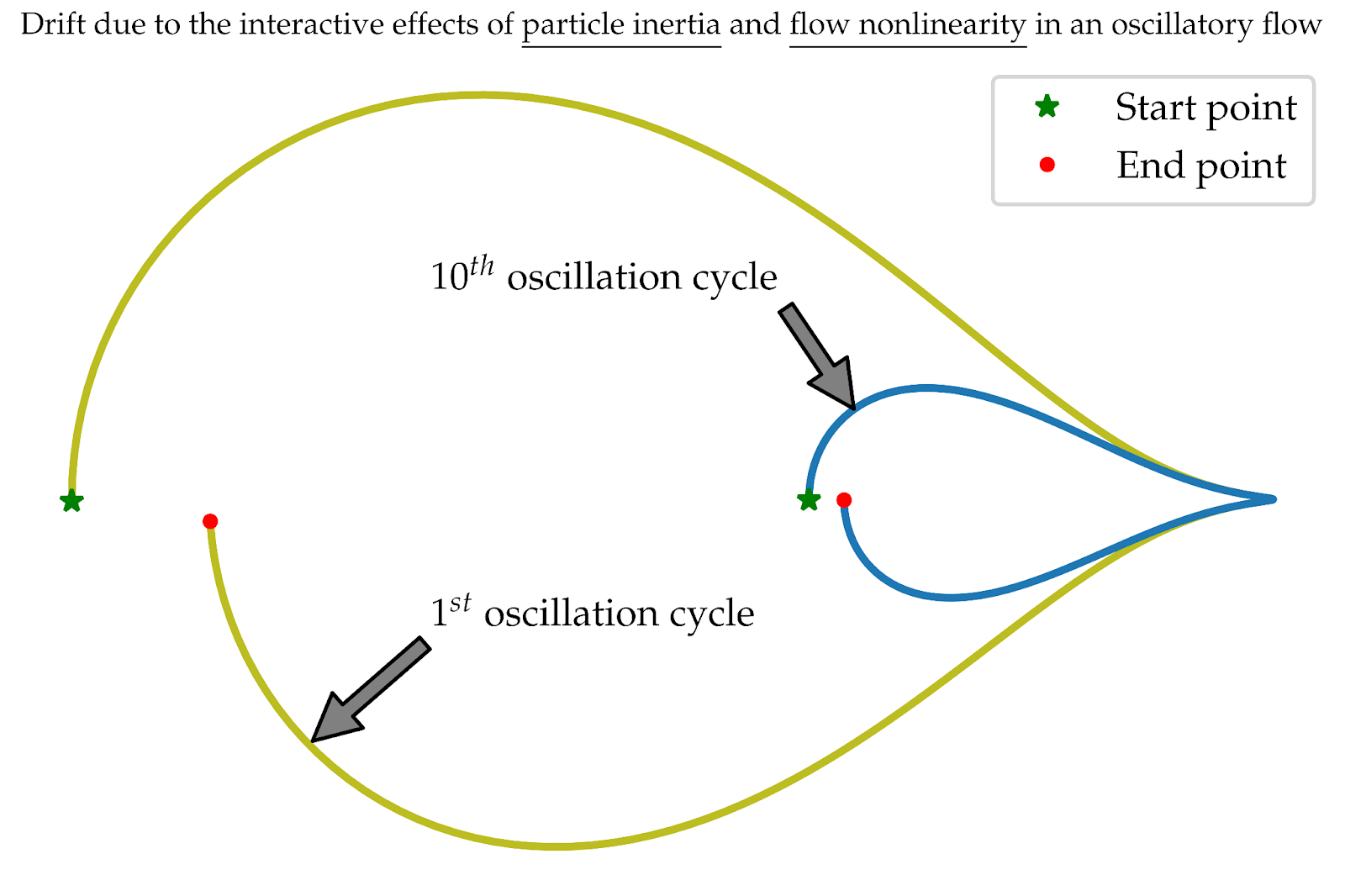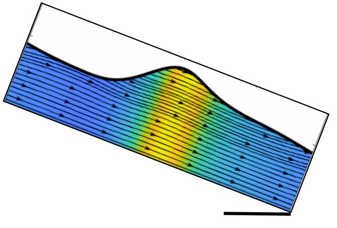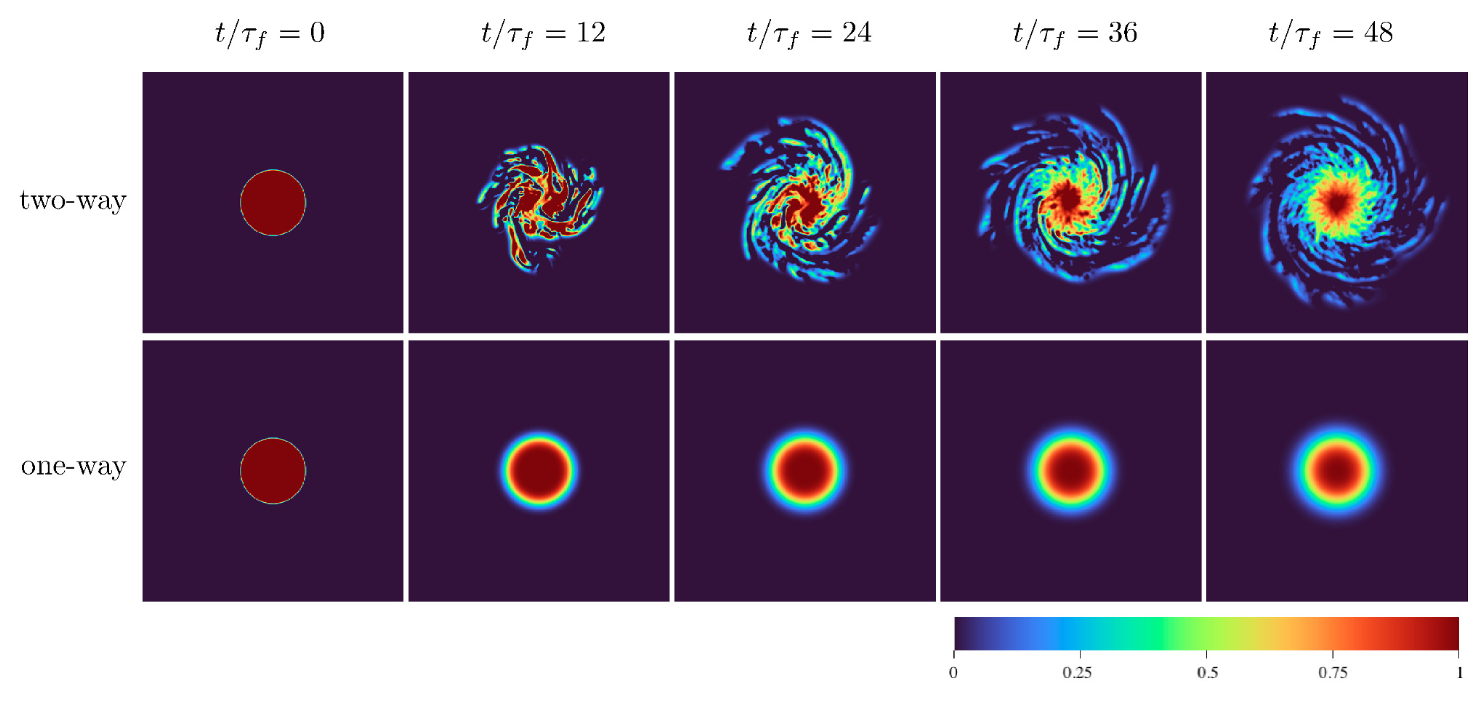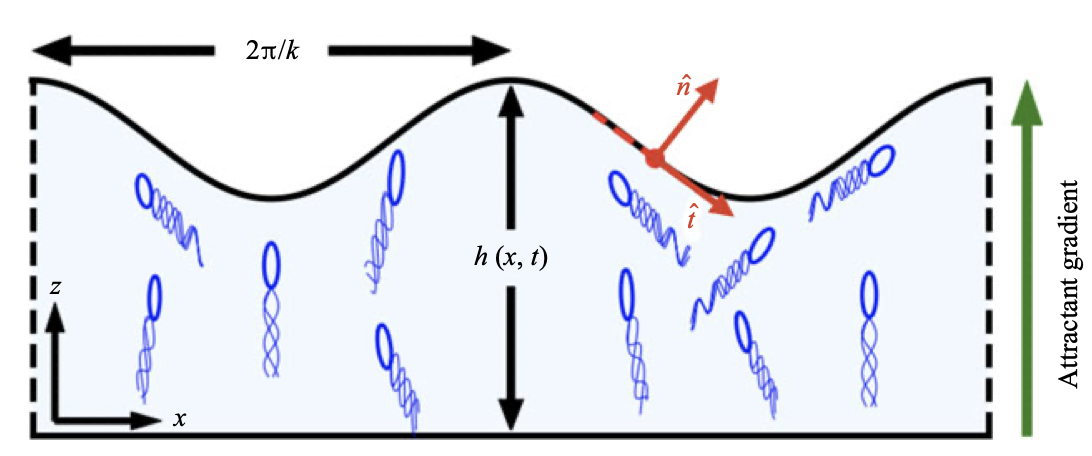

We are curious about questions in fluid dynamics and transport processes, with a preference towards those that arise in nature. Using a combination of theoretical and computational tools, we pursue research in three categories - waves and instabilities, particles and flows and physics of complex fluids, on occasions exploring the intersection of these areas.
Oceans have a variety of length and time scale processes happening, which influence the physical and biological processes in them. One of the most important large-scale processes is the freezing of ice caps at the poles during winter and their melting during summer, which generate large-scale ocean circulations. In order to sustain these circulations, the ocean has to impart energy to the cold water from the melted ice caps. This energy transfer is attributed to internal waves, surface waves, tides and earth’s rotation.
Earth’s oceans and atmosphere are inherently stratified in density i.e the density changes with height. Due to this stratification, when a small parcel of fluid is displaced, generally due to the presence of tides or waves on the surface, this parcel of fluid oscillates and generates internal waves as shown in the video below. These internal waves contribute to mixing in the ocean so as to maintain large scale circulation. The effects of IGW’s were first observed in 1893 by Fridtjof Nansen, where boats experienced strong resistance to forward motion even in calm waters. Signatures of IGWs can also be seen by aerial photographs of the ocean. These waves are highly nonlinear in nature and interact with each other giving rise to resonances and thereby increasing in amplitude. We study these underlying interactions and resonances amongst these waves.
Waves on an air water interface are commonplace, occurring on a large scale in the oceans, to small ripples on a lake or a swimming pool. Surface gravity waves are an important process that is parameterized into global climate models, since they interact with the atmosphere and determine the fluxes of heat entering and exiting the ocean, thereby regulating earth’s weather and climate systems.
These waves get generated due to wind blowing over a slightly disturbed interface. Gravity and surface tension tugs on this deformed interface to bring it back to its original flat state and thereby providing the restoring mechanism for the same. These waves grow in amplitude and break through the process of wave steepening.
The formation of surface gravity waves is a complex phenomena, Miles (JFM, 1957) studied the growth of these waves by performing stability calculations, and provided a mechanism for the growth of this instability. Where energy is transferred from a critical layer in air (where the wave speed matches with wind speed) to the interface. Similarly a rippling instability exists due to the critical layer in water and finally both their viscous counterparts.
In our lab, we perform linear stability calculations to identify parameter regimes, at which the interface gets unstable, we determine the rate at which they grow and perform DNS simulations to validate the theoretical results. While these studies are of interest to a scientific mind, waves also have an artistic beauty associated like this picture below of a popular Japanese woodblock print The great wave off Kanagawa.

Our research is dedicated to unraveling the flow and dynamics of intricate complex fluids, including dry granular materials, fiber suspensions, particle-fluid mixtures, and assemblies of swimming microorganisms. These materials hold immense practical significance, as they are widely encountered and transported in various industries. Simultaneously, they present intricate scientific challenges. Our investigations employ a multifaceted approach, incorporating theoretical analysis, and computational modeling. Our recent research highlited bellow:
Gravity-driven interactions among charged dielectric spheres in a gaseous medium are examined, leading to surface-to-surface contact within a finite timeframe due to non-continuum lubrication interactions. Attraction is observed between closely approaching dielectric spheres with similar charges across various size and charge ratio settings. The research investigates the influence of electrostatic forces on the trajectories of two uncharged conducting spheres under an external electric field, considering hydrodynamic interactions. Deriving the asymptotic interparticle force under lubrication limits for arbitrary size ratios, it reveals the attractive electric force's divergence as separation approaches zero, overcoming continuum lubrication resistance.
Vortical flows are ubiquitous in various industrial and geophysical contexts. More commonly, these flows will be suspended with heavy inertial particles, for example dustdevils and atmospheric cyclones. The great red spot on Jupiter is an anticyclonic storm. The suspended particles can be rigid dust particles or water droplets, which are heavier than the ambient flow. Thus the heavy particles do not quite obey the fluid trajectory, rather deviate lag significantly due to their inertia. It is theoretically known that heavy inertial particles centrifuge away from vortical regions and accumulate in the straining region of the flow. We model the dynamics of inertial particles in the flow generated by an isolated elliptic vortex patch and study the dynamics of heavy particles in it. We find that the particles sample the flow field according to the stable and unstable manifolds. The inclusion of an external shear flow is found to induce chaos to the inertial particle trajectories.
The instability of a thin-film suspension of micro-swimmers under the influence of an attractant gradient, resulting in a preferential swimming direction and generating an anisotropic orientation field, is explored. Micro-swimmers, modeled as force dipoles, reveal instability due to the interplay between active stress and perturbations in swimmer density. A stability analysis assesses how the presence of an interface modifies this instability, unveiling a novel mode driven by interface deformation due to active stress. Instabilities are influenced by the orientation of the attractant gradient relative to the interface, even in a suspension of chemotactic pullers previously considered stable.
When a travelling electromagnetic wave encounters an object of different dielectric constant, it gets scattered from the surface of the object. Due to the scattering of the electromagnetic wave, the object experiences a force called the radiation force. Here, we study the scattered electromagnetic field and the radiation force on the conducting, dielectric and bi-dielectric (Janus) particles using the Lattice Boltzmann method.
In surface gravity waves, an anisotropic particle exhibits orbital motion. A negative buoyant particle settles into a deep flow field. The transportation of an anisotropic particle is a complex problem because it also depends on the orientation of a particle. Hence, translation and orientation are coupled dynamics to understand the transportation of a particle. In this video, we observed that as a particle settles, its orientation changes with time and attains a steady orientation. Altering the orientation leads to different trajectories of a particle.
The dynamics of inertial particles in pulsatile or Womersley flows are crucial in understanding various physical and biological processes and designing microfluidic devices. We carry out collaborative work with Prof. Mahesh Panchagnula, Applied Mechanics IIT Madras, to study the transport of particulate matter using Maxey-Riley & Langevin models & mixing in fluid mass in the respiratory airways and understand the dispersion of inertial particles in an axially diverging conduits in the oscillating background with the focus to understand the interactive and individual effects of particle inertia, time oscillation and degree of geometry divergence.

Fluids that possess an underlying microstructure affecting their macroscopic properties are categorized as complex fluids. Our interest lies in understanding the microstructure's influence on the fluid flow dynamics. Thus far, we have been working on such flows in the context of particle-laden falling films, dusty flows and bacterial films.
Falling liquid films laden with particles are ubiquitous, from coating processes in industries to the tear film protecting our eyes. In this context, we studied the stability of the canonical problem of a particle-laden gravity-driven falling film. We found that the viscosity stratification created by the suspended particles could solely act to destabilize the fluid flow.

Vortical flows with heavy dispersed particles occur in diverse scenarios, both of natural and engineering origins. Here, We studied the effect of inertial particles dispersed in a circular patch of finite radius on the stability of a two-dimensional Rankine vortex in semi-dilute dusty flow. The mechanisms driving the instability are characterized using linear stability analysis for weakly inertial particles using both 2-D and 3D stability analysis.

Active suspensions are ubiquitously found in a variety of natural systems. One of the fundamental aspects leading to the medium-like behavior from which the word "active suspensions" is coined, is the non-passivity or motility or self- propulsion of these organisms. The flow that is generated in the fluid medium due to the self-propulsion is of interest. We explore the role of geometric confinement on the creation of flow instabilities that eventually give rise to the phenomenon of collective motion. Switching from micron-sized swimmers to virus particles at the nanometer scale, We also explore the role of convective fluid motion in the aerosol transmission of diseases.
